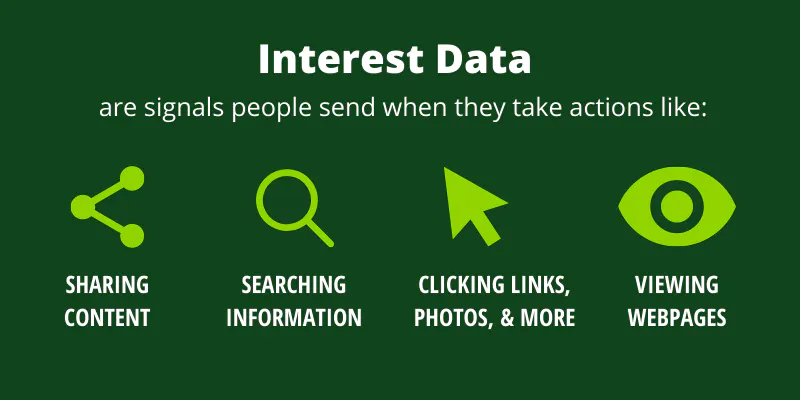The ad buying platforms of Google and Facebook are magnets for ad dollars, and there’s not a big mystery behind that magnetism. Both have an enormous number of logged-in users across devices. They also use sophisticated algorithms that help marketers execute objectives like ad targeting, consumer journey analytics, cohort analysis, and web/app experimentation.
EMarketer predicted Google, Facebook and Amazon would nab 52.4% of US digital ad spending in 2021, and that Amazon would get 11.6%. Collectively, this powerful triopoly of walled gardens will grab an even higher share of budgets this year and next, the researchers predict.
But not all is rosy for marketers who utilize these walled gardens, which earn their name by keeping the secrets of what flourishes inside to themselves. The first-party data they collect about their users is among those secrets. Want a list of users who are interested in the category of home and garden? You won’t get one. Want a list of users who are researching cars or who recently had a baby? You won’t get those either.
Fortunately, there’s another place to turn for this kind of data: the open web. Since consumers spend time there as well, data providers are able to gather relevant and privacy compliant information about users, including their cross-interests and passions.
Why Walled Gardens Frustrate Data Seekers
Walled gardens do share some data points about individuals. It’s on an aggregated level, however, and the companies don’t generally disclose how they form these groups or the data science they use to lump people into categories.

While that aggregated data is useful for broader analysis, brands that recognize the importance of having a holistic view of customers need granularity. You need to tap into as many data points as possible about what customers are doing across the web so you can market to them with the right message at the right time. Walled gardens hamper this effort when they don’t share granular user data.
Other Data Sources Are More Accessible
First-party data, on the other hand, is some of the easiest information for brands to harness. You can, and arguably should, gather email addresses and other data about your own users through means like:
- Their purchase history
- Digital interactions they have on your websites or mobile apps
- Conversations they have with your call center
- Their participation in your loyalty program
Another valuable option is third-party data that data providers collect in real time—perhaps by inserting JavaScript code on websites across verticals, industries and categories. You can use this data to gain insight on an individual-user level instead of on an aggregated level.
Providers with robust data science teams can create audience segments for you that perform well on their own. Alternatively, you can use this third-party data to enrich additional data sources that include:
- Your own first-party data
- Other data you are using, like location data, as long as you can match the ID assigned to an anonymous person
Leveraging Real-time Interest Data Outside the Walled Gardens
Interest data is an example of third-party intelligence that data providers can gather in real time across the global web.
People send signals about their cross-interests and passions when they take actions like:
- Sharing content
- Searching
- Clicking on content
- Viewing web pages

A data provider that can extract interest data about users from publisher sites can provide you with files of users interested in the category of home and garden or who are researching cars or who recently had a baby.
Some data providers can also create personas by mapping multiple data points together. For instance, they can determine that a person who searches for yoga classes, shares an article about organic foods and consumes content about hybrid SUVs is sending strong signals of being an eco-conscious practitioner of yoga.
In addition, you can purchase data from providers not only at the user level, but also at the event level. This flexibility enables you to use the intelligence in ways that best suit your needs, including for:
- Improving personalization
- Understanding your audiences better
- Broadening the reach of your campaigns
- Upselling and cross-selling
- Refreshing your marketing strategy

Ultimately, while people reveal a lot about themselves in the closed ecosystems of Google, Facebook, Amazon and other walled gardens, they also do so on the open web. Employing real-time interest data and other information that data providers gather across digital properties can help you achieve a fuller picture of a customer with nary a wall to scale.




